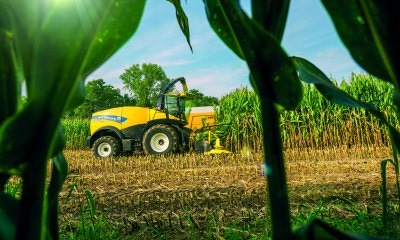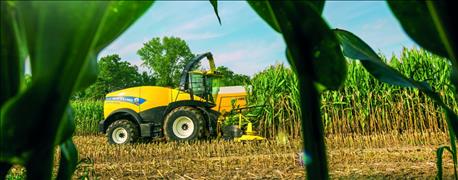August 7, 2016

With this year's early planting, corn silage harvest will likely ramp up a couple weeks earlier than "normal" (whatever that is...). If this fall plays out like last fall, with unseasonably warm weather, we may experience unfrozen fields for a few more months.
To reduce erosion potential on these harvested fields, we have a couple options to maintain adequate residue cover with both live and dead plant biomass.

Given our early corn silage harvest, we have a golden opportunity to employ measures to conserve and/or enhance our soils.
First, we can manipulate the amount of residue cover by adjusting our corn silage cutting height. Studies have shown that approximately one ton of dry matter is left in the field per one foot of stalk height. This means we should expect approximately 0.5 ton of dry matter per acre if we are cutting at the 6 inch height and 1 ton of dry matter per acre if using a 12-inch cutting height. These are only estimates, because as you can guess, plant population, hybrid, and yield level all influence the amount of dry matter left behind.
Where this dry matter exactly ends up in the field is influenced by tillage, weather conditions, harvest equipment, and row spacing, thereby affecting the actual percent ground cover.
Figuring residue cover
In the studies reviewed, these environmental and residue management factors contributed to large variability in the percentage of the actual soil surface covered by residue. For example, if approximately 1 ton of dry matter was left in the field, the measured percent ground cover after harvest ranged from 18% to 41% with an average of 27% cover. If we are trying to maintain at least 30% residue cover to meet conservation requirements, one ton of dry matter per acre (12-inch silage cutting height) doesn't suffice. At an 18-inch cutting height and approximately 1.5 tons of dry matter left per acre, 25% to 63% ground cover remained after harvest, with an average of 42% cover However, it is important to remember that percent ground cover for many conservation programs is measured after planting, not after harvest. Estimates of winter residue losses range from 0% to 20% of the total biomass depending on snow cover, moisture and temperature.
Obviously, increasing silage cutting height decreases yield. However, because less stalk is harvested, overall harvested silage quality and milk per ton increases. Therefore, the trade-off between increased silage quality and reduced silage yield is one each individual farm must weigh for themselves.
The cover crop option
If manipulation of residue cover through silage cutting height isn't an option, we can also use cover crops to increase ground cover for soil erosion protection. A study of five cereal cover crops in Maryland (triticale, wheat, annual ryegrass, cereal rye and barley) planted in late September, found that by Nov. 1, the cereal rye (greater than 90% cover), barley (greater than 70% cover), annual ryegrass (greater than 50% cover) had achieved greater residue cover than the conservation standard of 30%. By the April 1 sampling date, all five covers achieved more than 50% residue cover, with the cereal rye, triticale and barley, providing more than 80% cover. With 80% residue cover, estimated soil erosion losses can be reduced by 85% or more as compared to fields with no residue.
Given our early harvest season, we have a golden opportunity to employ measures to conserve and/or enhance our soils. Whether through crop residue or an actively growing cover crop, we can actively manage the percent ground cover in our corn silage yields to reduce the risk for soil erosion both this fall and next spring.
Patton is the Shawano County Extension agriculture agent.
You May Also Like




